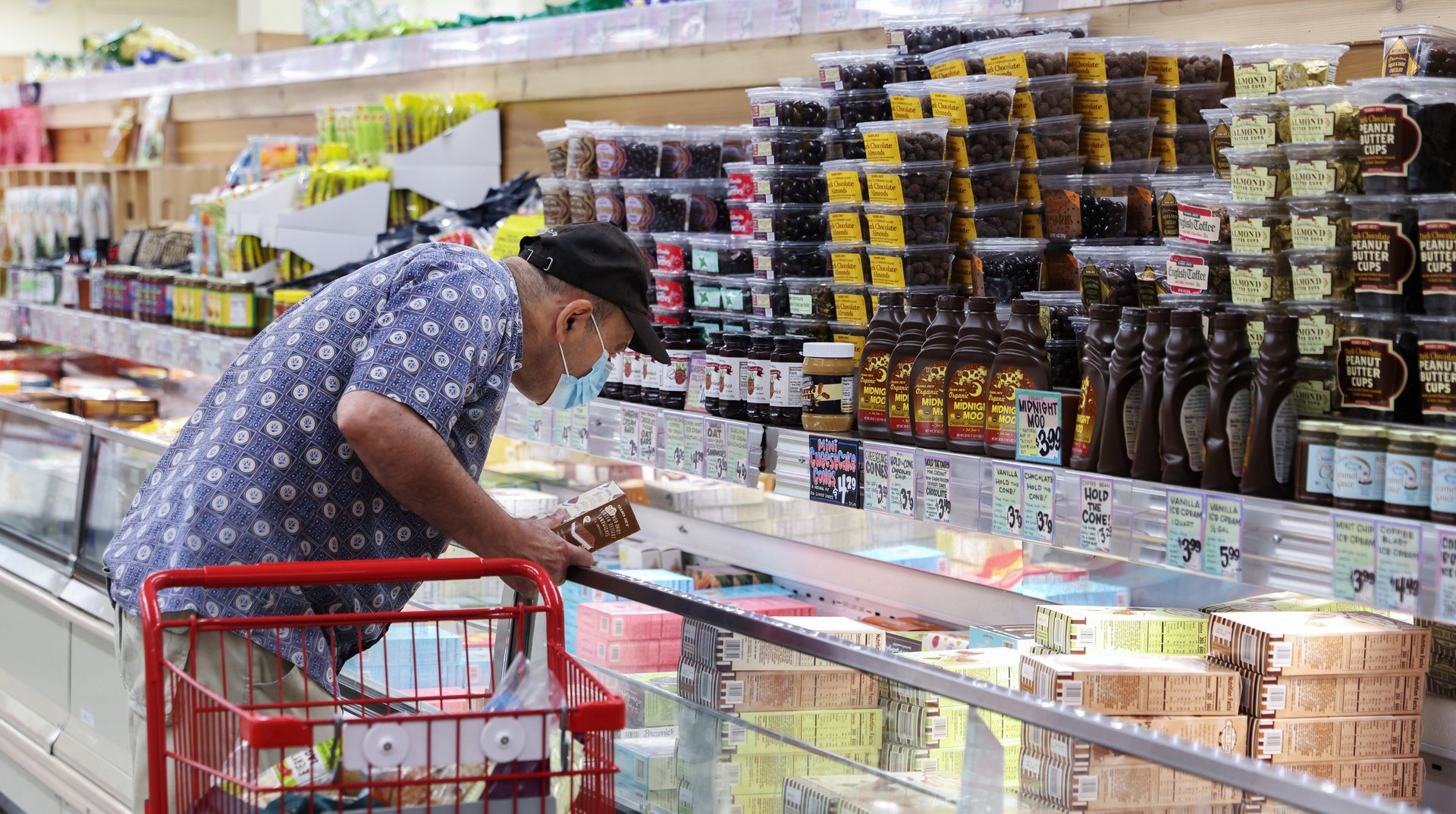Global commodity prices have dropped—but don’t expect food prices to follow anytime soon
High labor and energy costs continue to factor into food prices.

Since April, global commodity prices have been falling, according to the United Nations’s Food and Agricultural Organization (FAO) index of food prices. The latest figures from July show the steepest decline since 2008, driven by the drop in prices of vegetable oil and cereals. The index measures the monthly change in average prices of meat, dairy, cereals, vegetable oils, and sugar worldwide.
Cereal prices fell the most in response to Russia and Ukraine agreeing to a deal in July to resume the export of grain from Black Sea ports in Ukraine. Increased maize supply from Argentina and Brazil also helped ease the pressure on prices, according to the FAO.
Despite the respite in wheat prices, food prices around the world will likely remain elevated, said Monika Tothova, an economist at the UN’s FAO. The index in July remains 13.1% higher than in July of 2021.
The easing of food prices is not straightforward, as the cost of producing food depends on multiple factors. Prior to the Ukraine-Russia war, global food prices were already rising due to supply chain snags and severe weather. Now, high labor and energy costs continue to factor into food prices.
Expect to see the price of packaged food remain high
High prices are particularly evident in processed food. Last month, big food manufacturers Nestle and Mondelez raised prices for consumers as their own costs increased, according to company filings. When it comes to processed food, prices for commodity items like sugar and oil combine with the costs of labor, energy, and rent, to affect the final price of the product said Tothova.
Soaring gas prices are also contributing to high food prices. In response to high gas prices, fertilizer plants in the EU have been shutting down. Farmers make planting decisions based on the cost of production, which includes fertilizers, and can lead farmers to switch to crops that are cheaper to grow, like pulses, said Tothova.
There is also a lag time for lower commodity prices to be passed on to consumers, she said. For instance, when it comes to countries importing wheat, they will need time to process it into flour, and mills could still be processing the older stocks, she said.
What will the current state of food prices mean for consumers globally?
In countries like the US, people may be able to absorb higher costs more easily, as they can switch to cheaper alternatives, compared to poorer countries, where people may not have as many choices.
The decreased global commodity prices will also not address the root causes of food insecurity in countries like Ghana, Yemen, Afghanistan, and Vietnam, said Tothova, where conflicts like violence or weather conditions factor into food prices.
